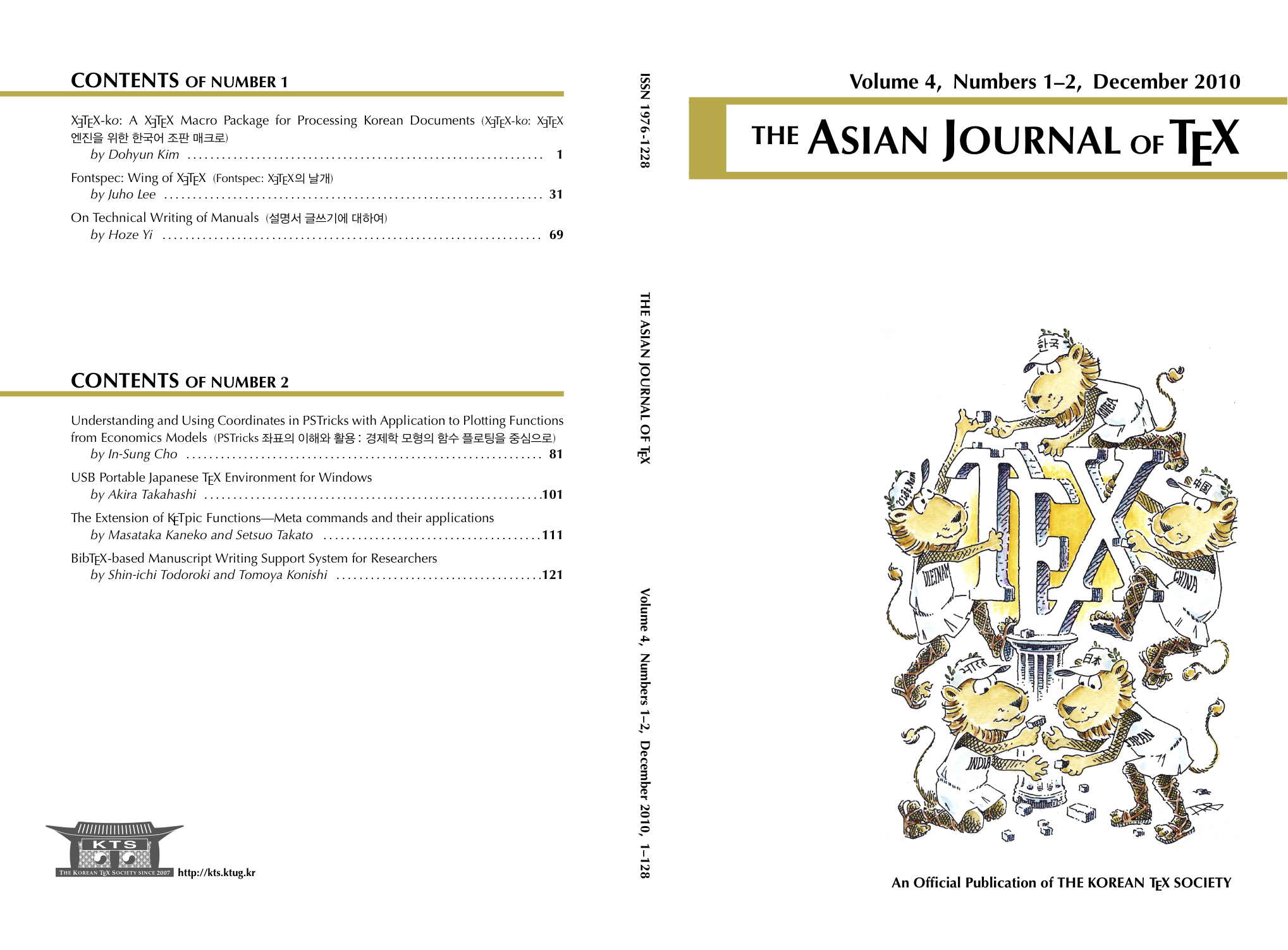Published on June 30, 2010
XeTeX-ko: A XeTeX Macro Package for Processing Korean Documents (XeTeX-ko: XeTeX 엔진을 위한 한국어 조판 매크로)
by Dohyun Kim (김도현) 1-30XeTeX-ko is a macro package for typesetting Korean documents, including old Hangul texts as well, upon XeTeX engine. XeTeX is a sophisticated TeX-engine which supports quite well full Unicode encoding and OpenType layout features. Using XeTeX itself, however, is not fully satisfactory in the eyes of the Korean, especially because of relatively poor quality of latin/greek/cyrillic glyphs in many Korean fonts. For this reason among others, XeTeX-ko has been recently developed, mainly focusing on how to typeset with different fonts between Western and Korean characters. This paper presents current state of XeTeX-ko package along with its main features and usages, including among others how to configure Korean fonts, how to change character spacing, and what to be prepared for typesetting old Hangul texts. At the end of the paper, some limitations of current XeTeX-ko package will also be discussed as a warning to the users.
Fontspec: Wing of XeTeX (Fontspec: XeTeX의 날개)
by Juho Lee (이주호) 31-68Fontspec 패키지는 XeTeX에서 트루타입 폰트와 오픈타입 폰트를 쉽게 사용할 수 있도록 도와주는 패키지이다. 이를 통하여 사용자는 폰트에 포함된 고급스러운 타이포그래피적인 특성을 자유롭게 사용하여 고품질의 문서 조판을 이루어낼 수 있다. 이 글은 폰트에 대한 이해를 도모하기 위하여 현대 인쇄 출판에 주로 사용되는 폰트의 발전 과정과 각 폰트의 특성을 간략히 소개한다. 이어 리거처, 숫자 모양, 커닝, 작은 대문자, 스와시∙올터네이트∙배리언트 등 글리프 대체로 일괄할 수 있는 폰트의 고급 특성을 fontspec 패키지 및 한글 텍 환경에 최적화된 XeTeX-ko에서 어떻게 구현할 수 있는지 다양한 예제 중심으로 제시한다.
On Technical Writing of Manuals (설명서 글쓰기에 대하여)
by Hoze Yi (이호재) 69-80이 글의 주제는 '설명서 글쓰기'로 크게 두 가지 범주에서 논의하고자 한다. 하나는 글쓰기의 여러 갈래 중 '설명서'라는 분야가 갖는 특징과 제약에 대한 것이고, 다른 하나는 그 조건들을 충족할 수 있는 문장론에 대한 것이다. 이들에 대한 논의와 함께 설명서 글쓰기가 요구하는 다양한 작업들에 대해서도 설명한다.

